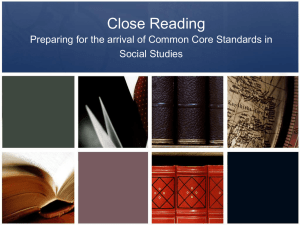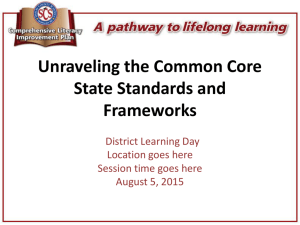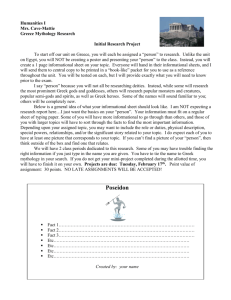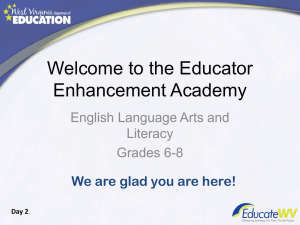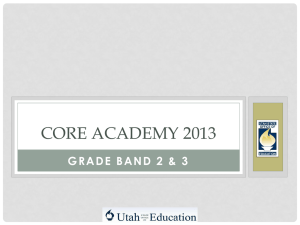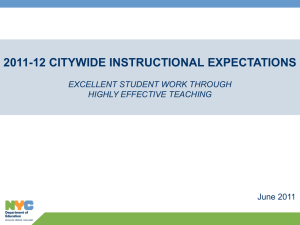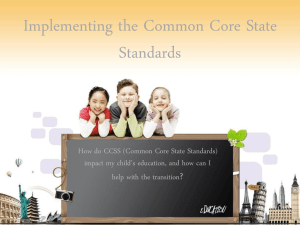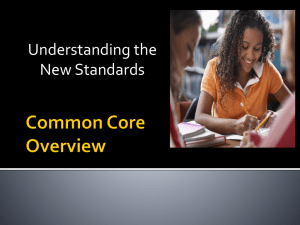Common Core Lead Teacher Training
advertisement
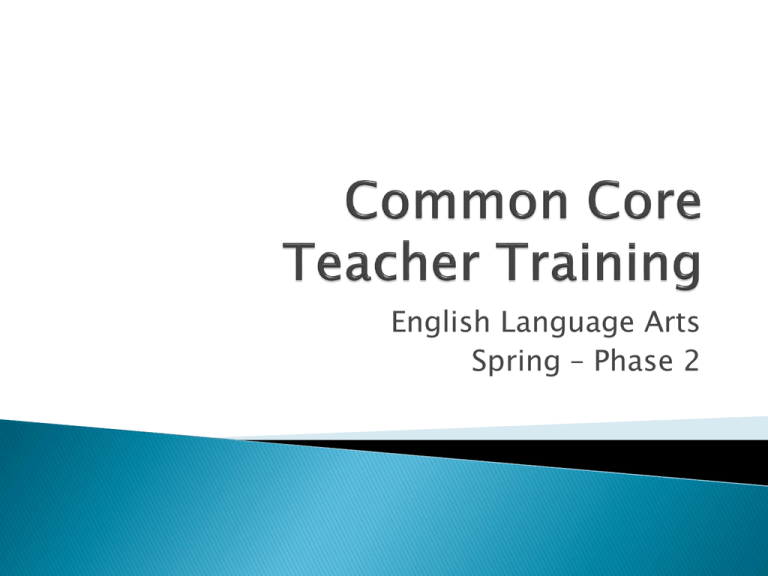
English Language Arts Spring – Phase 2 Common Core State Standards Initiative ◦ ◦ ◦ ◦ State-led College and Career Ready Adopted in 2010 by California Research based Next Generation Assessments ◦ Smarter Balanced Assessment Consortium (SBAC) ◦ 2014-2015 Overview of English Language Arts ◦ Reading, Writing, Speaking and Listening, Language ◦ Anchor standards match grade specific standards Every K-5 LBUSD classroom teacher will ◦ Be able to explain the 3 Common Core Instructional Shifts for English Language Arts ◦ Bring more informational text into English Language Arts ◦ Ask text-dependent questions English Language Arts/Literacy #1 Building knowledge through content-rich nonfiction and informational text ◦ 80% of required reading in college and the workplace is informational or non-fiction ◦ Harder for students to comprehend ◦ Students are asked to read very little informational texts in lower grades ◦ Common Core calls for 50% Narrative and 50% Informational at K-5 #2 Reading and writing grounded in evidence from text ◦ Most college and workplace writing is evidence based ◦ Reunite reading and writing ◦ Students should write about what they read, moving away from decontextualized prompts ◦ Text should be at the center of learning ◦ Students need to be able to “read like a detective and write like a reporter” #3 Regular practice with complex text and its academic vocabulary ◦ Complexity in text at K-12 has eroded Length of sentences in K-8 textbooks have gone from 20-14 Vocabulary demands have declined ◦ Complexity of college and career text has remained steady or increased ◦ What is complex text? Author’s tone, word choice, and intent is highly sophisticated Unconventional text structures I. II. III. IV. V. VI. VII. VIII. IX. Foundational Skills Read Aloud K-2 Fluency Academic Language Learning from Text Independently Word Study Volume of Student Reading Evidence-Based Writing Close Analytical Reading Brainstorm the classroom practices, resources, and challenges/opportunities for grades 2-3 for your shift Share out Where do we find it? ◦ ◦ ◦ ◦ ◦ ◦ ◦ ◦ Social Studies Text Science Text Health Text Read Alouds Open Court Leveled Classroom Libraries Teacher collections Instructional leveled books Other? Read the handout on text-dependent questions What are text dependent questions? Why are text dependent questions important? What do answering text dependent questions lead to? Read the questions from Lesson 2, “Electric Circuits” found in the margins of the Grade 4 Science Teacher’s Edition Determine if these questions can only be answered by referring explicitly back to the text in front of them Which of the questions are text dependent? What in the text makes you say that? Where did you find your answer? Can anyone find the sentence that tells us that and reread it for the class? Is that correct? Let’s look back and see if we can find where it tells us that. Reread page ___ to find the answer. Prove it Using your science or social studies TE: ◦ Select a lesson you will be teaching ◦ Go through the questions in the margin to determine whether or not they are text dependent ◦ Create additional text dependent questions to go with that portion of the text ◦ Practice following up the question with ways to get students back into the text Questions Comments Concerns Every K-5 LBUSD classroom teacher will ◦ Be able to explain the 3 Common Core Instructional Shifts for English Language Arts ◦ Bring more informational text into English Language Arts ◦ Ask text-dependent questions

